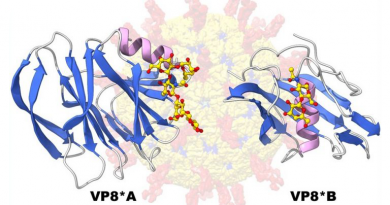Image of the Month: The wooly mammoth emerges from the past
Researchers have opened a window into the past and peered into the chromosomes of the wooly mammoth, a magnificent creature that has been extinct for nearly 4,000 years.

A team led by scientists from Baylor College of Medicine – including Dr. Erez Lieberman Aiden and Dr. Olga Dudchenko – as well as the University of Copenhagen, and Centre Nacional d’Anàlisi Genòmica and Centre for Genomic Regulation in Spain discovered fossils of ancient chromosomes in the skin remains of a woolly mammoth that died 52,000 years ago.
The analysis of the surprisingly well preserved ancient chromosomes has revealed new aspects of the wooly mammoth. For instance, they found that mammoths had 28 chromosomes, just like current elephants do. They were also able to study which genes were active in the mammoth and proposed an explanation for the long-term preservation of the chromosomes.
Interested in learning more about ancient mammoth chromosomes? Read the paper published in Cell.
Follow From the Labs on X @BCMFromtheLabs and Instagram!



